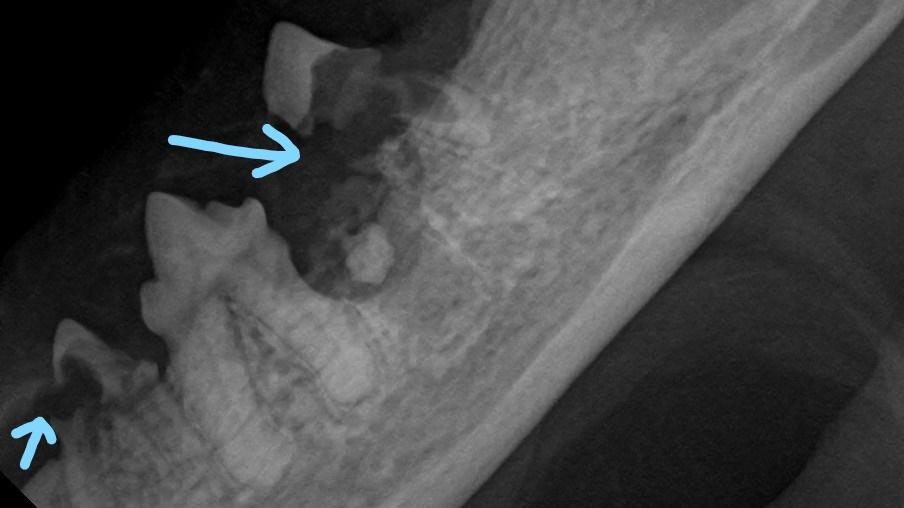Resorptive Dental Lesions in Cats

- posted: Feb. 29, 2020
Resorptive Dental Lesions in Cats
Our feline friends have 30 teeth shaped for killing and eating small prey like mice. By comparison, dogs have 42 teeth and we have 32 adult teeth. Some cats can develop painful cavity-like lesions on their teeth called resorptive lesions.
The true underlying cause of the loss or reabsorption of the tooth enamel is not known, but speculation is that plaque and inflammation release compounds that bring cells called odontoclastic cells that break down the hard tissues of the tooth. Once the enamel is gone, the sensitive part of the tooth with the nerves is exposed and becomes very painful. The tooth can also become loose and/or the crown of the tooth can break off. The roots of the tooth sometimes dissolve or reabsorb into the surrounding bone. While these look a bit like the cavities that you or I may get, the process is quite different and they are not caused by diet or poor oral hygiene.
Cats instinctually hide pain and illness; however, some cats with painful resorptive lesions may drool, stop eating, paw at their mouths or shake their heads. The cat’s jaw will also “chatter” when the lesion is touched with a dental probe, even under anesthesia. If your cat exhibits any of these signs and/or your veterinarian notices any suspect lesions when examining your cat, he or she will need to have a dental cleaning and radiographs of any affected teeth.
In most cases, the tooth with the resorptive lesion needs to be extracted or may need what is called a “crown amputation” where the crown which is the part of the tooth we see in the mouth is cut off just below the gumline and the gum tissue is then sutured over the area. This is done only if the roots are reabsorbing into the surrounding jaw bone and cannot be extracted. If an intact root is present, it is also removed.
Pain medications can be used, but there is really no good medical therapy for cats with resorptive lesions. Dental surgery is the only way to correct this problem. The lower premolars are most commonly affected, but resorptive lesions can occur on any tooth and often affects multiple teeth in the mouth.
If your cat’s gums look red, or your kitty is showing any signs of difficulty eating or pain around her mouth, have her evaluated by your veterinarian for resorptive lesions.
This blog brought to you by the Patton Veterinary Hospital serving Red Lion, York and the surrounding communities.
https://todaysveterinarypractice.com/external-tooth-resorption-cats/
Location
Patton Veterinary Hospital
425 E Broadway
Red Lion, PA 17356
